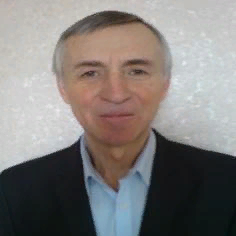International Journal of Engineering and Manufacturing (IJEM)
IJEM Vol. 9, No. 4, 8 Jul. 2019
Cover page and Table of Contents: PDF (size: 1001KB)
Statics Simulation of the Buffer Wastewater Neutralization Process
Full Text (PDF, 1001KB), PP.1-14
Views: 0 Downloads: 0
Author(s)
Index Terms
Buffer wastewater, pH, static characteristic of the neutralization process, mathematical model of static of the neutralization process, reagent, titration of a strong acid, titration of a weak acid, automated control system (ACS) of buffer wastewater neut
Abstract
The pH value is a very common chemical measurement and is an indicator of water quality. For dilute solutions of strong acids and bases, the pH is related to their concentration, and therefore, it’s related to the required for neutralization dose of the reagent, a clear dependence. In this case, the pH value is quite reliable parameter to control the process of neutralization. However, when the wastewater components that have buffer properties, for example, mixtures of weak acids and bases and their salts in mixture with strong acids are present, the neutralization process is described already by a group of characteristics. In the last case, traditional automatic systems cannot cope with the qualitative pH regulation.
The article is devoted to the mathematical statics model of a neutralization buffer of wastewater process development. Based on the formulated assumptions, this process was divided into stages. After considering the characteristics of each stage the mathematical model of the process was obtained. The theoretical research results are specified in the developed calculation algorithm of the total reagent dose which is required to neutralize the wastewater, which have strong and weak acids in its composition. The theoretical and practical research results were approbated in the design of automatic control system of the buffer wastewater neutralization process in the enterprise of low-waste technology.
Cite This Paper
Ruslan A. Osipa,"Statics Simulation of the Buffer Wastewater Neutralization Process", International Journal of Engineering and Manufacturing(IJEM), Vol.9, No.4, pp.1-14, 2019. DOI: 10.5815/ijem.2019.04.01
Reference
[1]R. Connor, The United Nations world water development report 2015: water for a sustainable world. –UNESСO Рublishing, 2015. –T. 1. -125 pages.
[2]S. Ortega Alba and M. Manana, Energy Research in Airports: A Review, MDPI, Energies, 9, 349, 2016. DOI:10.3390/en9050349
[3]I.C. Carvalho, M.L. Calijuri, P.P. Assemany, M.D.F.M.e. Silva, R.F. Moreira Neto, A.F. Santiago, M.H.B. de Souza, Sustainable airport environments: A review of water conservation practices in airports. RCRecycling 74, pp. 27 –36, 2013. Available from Internet: http://dx.doi.org/10.1016/j.resconrec.2013.02.016
[4]A. Zhuchenko, M. Kvasko, R. Osipa “The use of microprocessor technology in wastewater treatment control systems”. Bulletin of the National Technical University of Ukraine “Igor Sikorsky Kyiv Polytechnic Institute”, ser.” Chemical Engineering, Ecology and Resource Saving”, Vol.2, No.8, pp. 143-145, 2011.
[5]Anatolii I. Zhuchenko, Liudmyla V. Osipa, Evgeniy S. Cheropkin,"Design Database for an Automated Control System of Typical Wastewater Treatment Processes”, International Journal of Engineering and Manufacturing (IJEM), Vol.7, No.4, pp. 36-50, 2017. DOI: 10.5815/ijem.2017.04.04
[6]A. Bieliatynskyi, L. Osipa, L. Yaroshchuk, E. Cheropkin. Information support of automated control subsystem of the airport’s water-saving processes // Proceedings of the 21th Conference for Junior Researchers "Science – Future of Lithuania": TRANSPORT ENGINEERING AND MANAGEMENT (Vilnius, 4-5 May 2018, Lithuania). – pp. 146-150. — Access mode: http://jmk.transportas.vgtu.lt/index.php/tran2017/tran2018/paper/viewFile/148/203.
[7]Stanley K, Gandhi S. “Industrial effluent water pH Neutralization controller design using LabVIEW &Matlab.” International Journal of Pure and Applied Mathematics. Volume 117, No. 10, pp. 19-23, 2017, ISSN: 1311-8080, doi: 10.12732/ijpam. v117i10.4
[8]Boozarjomehry, R. B., Svcek, W. Y., Output feedback neurolinearization, ISA Transactions, 40, pp. 139-154, 2001.
[9]Biagiola S. I., Agamennoni O. E., Figueroa J. L. Robust control of wiener systems: application to a pH neutralization process. Brazilian Journal of Chemical Engineering. São Paulo Jan. Mar. ISSN 0104-6632, vol. 33, No.1, pp. 4358-4383, 2016.
[10]Deapali Gupta, Balwinder Singh, Harpreet Singh, “Design and Development of Pesticide Residue Detection System using EC and pH Sensor”, International Journal Engineering and Manufacturing (IJEM), 2016, 2, pp.10-17. DOI: 10.5815/ijem.2016.02.02
[11]De, D. S., Loh, A.-P., Krishnaswamy, P. R., A nonlinear adaptive controller of pH neutralization process, Proc. Am. Contr. Conf, 2250-2254, Chicago, 2000.
[12]Franchuk G. M, Majd S. M ., Bondaruk A. M. “Comprehensive assessment of the quality of water ecosystems polluted wastewater discharges from the airport.” Kyiv, National Aviation University, High technology, Vol. 2 (22), рр. 246-249, 2014. (In Ukrainian)
[13]Higgins P. Ion selective electrode measurement - fundamentals in online analysis. Available from Internet: < https://www.ysi.com/ysi-blog/water-blogged-blog/2013/09/ion-selective-electrode- measurement-fundamentals-in-online-analysis >.
[14]A. Bieliatynskyi, L. Osipa, A. Klochan, E. Cheropkin. Control algorithm of the airport’s water-saving processes // Proceedings of the 21th Conference for Junior Researchers "Science – Future of Lithuania": TRANSPORT ENGINEERING AND MANAGEMENT (Vilnius, 4-5 May 2018, Lithuania). – pp. 137-141. — Access mode: http://jmk.transportas.vgtu.lt/index.php/tran2017/tran2018/paper/viewFile/ 149/163.
[15]Andrii Bieliatynskyi, Liudmyla Osipa and Bogdan Kornienko. Water-saving processes control of an airport, MATEC Web of Conferences , Vol. 239, 05003 ( 2018) DOI: https://doi.org/10.1051/matecconf/201823905003. — Access mode: https://www.matec-conferences.org/articles/matecconf/abs/2018/98/ matecconf_ts2018_05003/matecconf_ts2018_05003.html
[16]A. Zhuchenko, R. Osipa and L. Osipa, “Optimization tasks, which are solved in the integrated automated control system of water saving processes.”, Bulletin of the National Technical University of Ukraine “KPI named after І. Sikorsky”, ser.” Chemical Engineering, Ecology and Resource Saving”, - 2016. vol. 15, no 1, pp. 108–110.
[17]Ylén Jean-Peter. Measuring, modelling and controlling the pH value and the dynamic chemical state. Helsinki University of Technology Control Engineering Laboratory. 2001. – 145p. – Access mode: http://citeseerx.ist.psu.edu/viewdoc/download?doi=10.1.1.136.8092&rep=rep1&type=pdf
[18]Kazemian, H. B., Comparative study of a learning fuzzy PID controller and a self-tuning controller, ISA Transactions, 40, pp. 245-253, 2001.
